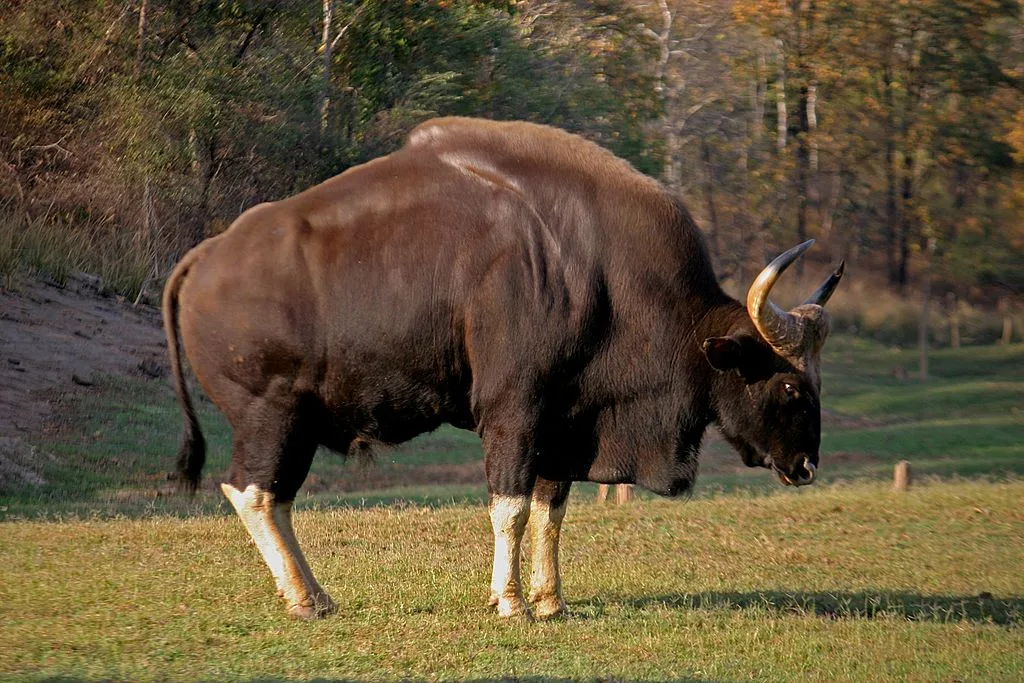Welcome to the pristine wilderness of Simlipal National Park, a hidden gem nestled in the heart of Odisha, India. If you’re a nature enthusiast with a passion for diverse ecosystems and vibrant wildlife, then this park is a must-visit destination. In this comprehensive guide, we embark on an exciting journey to uncover the historical significance, extraordinary biodiversity, thrilling wildlife encounters, travel logistics, accommodations, and everything you need to know about Simlipal National Park.
A Glimpse into History of Simlipal National Park
Before we delve into the captivating ecosystem of Simlipal National Park, let’s take a step back in time to appreciate its historical significance. Established in 1980, this national park holds a special place in the conservation history of Odisha.
The Legacy of Tribals

Simlipal is home to several indigenous tribal communities, including the Santhal, Munda, and Ho tribes. These communities have lived in harmony with nature for generations and have a deep connection to the land.
The Simlipal Rebellion
The park’s history is also marked by the Simlipal Rebellion of 1930, which was part of the larger Indian freedom struggle. Exploring the park’s history offers visitors a glimpse into the cultural and historical significance of the region.
Flourishing Flora at Simlipal National Park
As you venture into Simlipal National Park, you’ll find yourself immersed in a world of lush forests, dense vegetation, and diverse plant life. The park boasts a stunning array of flora, including:
Tropical Moist Deciduous Forests

The park is predominantly covered in tropical moist deciduous forests, which are home to a variety of tree species such as sal, teak, and mahua. These forests create a majestic atmosphere for nature enthusiasts to explore.
Orchids and Medicinal Plants
Simlipal is known for its rich diversity of orchids and medicinal plants. The park’s unique flora provides habitat for a wide range of wildlife and offers opportunities for botany enthusiasts.
Bamboo Groves

The park is also home to extensive bamboo groves, which provide both habitat and sustenance for various wildlife species. These unique habitats are a treat for photographers and nature lovers.
The Enigmatic Fauna at Simlipal National Park
The true treasures of Simlipal National Park are its charismatic fauna. The park is home to an impressive variety of wildlife, with a special focus on the Bengal tiger. Here are some of the incredible creatures you might encounter during your visit:
Bengal Tigers

Simlipal National Park is known for its Bengal tiger population. Spotting a tiger in its natural habitat is a thrilling and memorable experience. The park’s conservation efforts have played a crucial role in protecting this iconic species.
Elephants and Leopards

Apart from tigers, the park is home to a significant population of elephants and leopards. These large mammals contribute to the park’s balanced ecosystem and offer wildlife enthusiasts a chance to observe their behavior.
Gaur and Sambar

Simlipal is also known for its population of Indian bison, known as gaur, and the largest deer species in India, the sambar. These herbivores attract predators and are often seen during safaris.
Wildlife Encounters Await
Now that you’ve had a glimpse of the captivating inhabitants of Simlipal National Park, let’s explore the thrilling wildlife experiences that await you in this pristine wilderness.
Tiger Safaris
One of the main attractions of the park is tiger safaris. Guided safaris and treks take you deep into the heart of the forest, increasing your chances of spotting these majestic big cats.
Birdwatching Expeditions

Birdwatchers can indulge in guided birdwatching expeditions. The park’s diverse landscapes provide the perfect backdrop for observing and photographing a wide range of bird species, including the Indian pied hornbill and crested serpent eagle.
Jungle Trekking
For those seeking a more immersive adventure, jungle trekking offers an opportunity to connect with the forest landscape. Guided treks take you through the park’s dense vegetation, revealing the hidden secrets of the wilderness.
Getting There: Your Journey Begins
To embark on this extraordinary journey, you need to plan your route to Simlipal National Park. Here’s how you can reach this pristine wilderness:
By Air
The nearest airport to the park is Bhubaneswar Airport in Odisha, which is well-connected to major cities in India. From there, you can hire a taxi or take a bus to reach the park. The drive from the airport to Simlipal offers glimpses of the Odisha countryside.
By Rail
The nearest railway station to the park is Balasore Railway Station, approximately 60 kilometers away. After arriving at the station, you can hire a taxi or take a bus to reach the park. The train journey to Balasore provides glimpses of the coastal landscapes.
By Road
If you prefer a road trip, you can drive to Simlipal National Park or take a bus. The park is well-connected by road to nearby towns and cities in Odisha. The drive through the forested landscapes is an adventure in itself.
Where to Rest Your Weary Head
After a day of exploration, you’ll want a comfortable place to relax. Simlipal National Park offers limited accommodation options, primarily in the form of forest rest houses and eco-friendly lodges:
Forest Rest Houses
For a close-to-nature experience, consider staying at one of the forest rest houses within the park. These accommodations offer basic amenities and a tranquil environment where you can immerse yourself in the wilderness.
Eco-friendly Lodges
There are eco-friendly lodges and nature camps near the park that provide a unique and immersive experience. Staying at these lodges allows you to connect with nature while minimizing your environmental impact.
Best Time to Visit Simlipal National Park
The best time to visit Simlipal National Park is during the winter months, from November to February. The weather is pleasant, and wildlife sightings, especially of tigers and other mammals, are more frequent during this period. Avoid visiting during the monsoon season (June to September) when heavy rains can make the park less accessible.
Unforgettable Experiences Await
Now that you’ve gathered all the practical information, let’s delve into the experiences that will make your trip to Simlipal National Park truly unforgettable:
Tribal Culture Immersion
Explore the cultural richness of the region and interact with local tribal communities, including the Santhal and Munda tribes. Learning about their traditions and way of life adds a cultural dimension to your wildlife adventure.
Waterfalls and Picnics

Natural wonders, including stunning waterfalls like Joranda and Barehipani surround Simlipal National Park. These picturesque spots are perfect for picnics and relaxing amid nature’s beauty.
Botanical Garden
Visit the Simlipal Botanical Garden, located near the entrance of the park. This garden showcases a variety of plant species and offers educational insights into the park’s rich flora.
Fascinating Trivia
Before we conclude our journey through Simlipal National Park, here are some fascinating trivia tidbits that will deepen your appreciation for this wilderness wonder:
- The park is part of the larger Simlipal Biosphere Reserve, recognized as a UNESCO World Network of Biosphere Reserves.
- Simlipal National Park is known for its unique blend of tropical and subtropical forests, making it a biodiversity hotspot.
- The park’s landscape is characterized by rolling hills, meandering rivers, and dense forests, creating a picturesque setting for wildlife enthusiasts and nature lovers.
In conclusion, Simlipal National Park is a testament to the beauty and resilience of India’s natural heritage. From its historical significance to its captivating flora and fauna, there’s something for every nature enthusiast to cherish. So, pack your bags, plan your journey, and get ready for an adventure that will leave you with lasting memories of the wilderness of Simlipal National Park.
